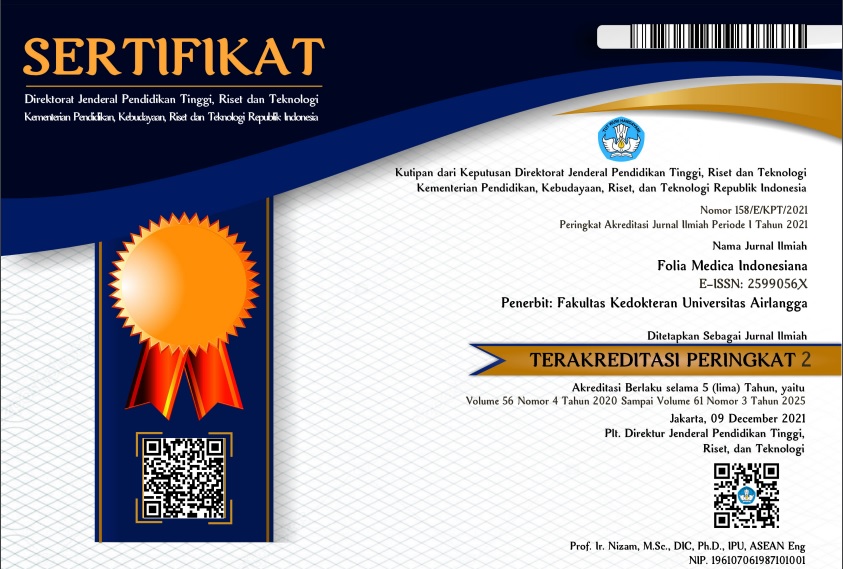ORCID ID
Imam Susilo: https://orcid.org/0000-0003-3194-2853, Ahmad Yudianto: https://orcid.org/0000-0003-4754-768X
Abstract
Highlights: • The post-mortem interval is related to tryptase and chymase expressions in anaphylactic shock incidence • Forensic experts can utilize tryptase and chymase as markers of anaphylactic (non-anaphylactoid) shock that occurs in the lungs. Abstract: Anaphylactic shock is a hypersensitivity response, a commonly type I hypersensitivity involving immunoglobulin E (IgE). It is caused by an antigen-antibody reaction that occurs immediately after a sensitive antigen enters the circulation. Anaphylactic shock is a clinical manifestation of anaphylaxis that is distributive shock, characterized by hypotension due to sudden blood vessel vasodilation and accompanied by a collapse in blood circulation that can result in death. β-tryptase and mast cell chymase expressions in the lungs of histopathological specimens that had experienced anaphylactic shock were examined at different post-mortem intervals in this study. A completely randomized design (CRD) method was employed by collecting lung samples every three hours within 24 hours of death, and then preparing histopathological and immunohistochemical preparations. The mast cell tryptase and chymase expressions were counted and summed up in each field of view, and the average was calculated to represent each field of view. The univariate analysis yielded p-values of 0.008 at the 15-hour post-mortem interval, and 0.002 at the 12-hour post-mortem interval. It was concluded that tryptase and chymase can be utilized as markers of anaphylactic (non-anaphylactoid) shock in the lungs.
Keywords
Anaphylactic shock, β-tryptase, chymase, post-mortem interval, mortality
First Page
51
Last Page
56
DOI
10.20473/fmi.v59i1.40938
Publication Date
3-5-2023
Recommended Citation
Putra, Biqisthi Ari; Susilo, Imam; and Yudianto, Ahmad
(2023)
"Expressions of β-Tryptase and Chymase in Lung Mast Cells due to Anaphylactic Shock through Histopathological Appearance at Different Post-Mortem Intervals,"
Folia Medica Indonesiana: Vol. 59:
No.
1, Article 10.
DOI: 10.20473/fmi.v59i1.40938
Available at:
https://scholarly.unair.ac.id/fk-fmi/vol59/iss1/10






